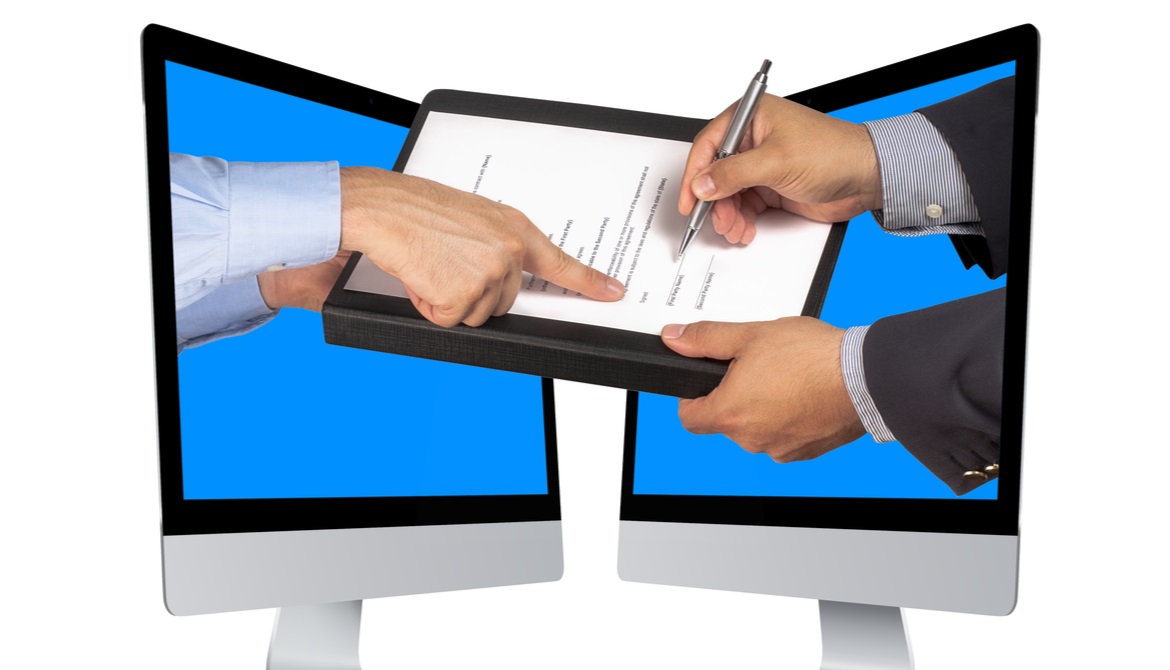4 minutes
How you sign can be the most important step in formalizing an agreement.
Contract management comes with a long list of duties, creating a complex workflow for you and your team. You may find yourself looking for a better way to manage and track vendor and loan contracts, automate calendar and email alerts, or improve processes for obtaining contract signatures.
One tool that many organizations have yet to implement is electronic signatures. Today, 80 percent of document processes still utilize the old-fashioned printing, signing and scanning of documents. Not only is the manual signature process outdated and slow, but it’s affecting how others view your brand. By utilizing e-signatures, you can significantly improve your user experience and appear as a leader in your industry.
Why E-signatures are the Most Secure Method
The contract lifecycle begins with counterparties coming to terms about an agreement and ends with a contract being signed for valid purposes. Legally, signing can be considered the most important step in the contract management or procurement process. Be careful with how you sign a contract because not all signature signing methods are equally secure.
To date, most contracts have been signed in one of three ways:
1. The wet signature – A wet, or handwritten signature, is the most common method for creating a legally binding document. It has been used effectively throughout history. However, when you sign your name, it is just a physical marking. It doesn’t provide proof of what happened when you signed it.
Handwritten signatures can be secure, but only to a certain extent. Additionally, it is time-consuming and difficult to track the status of each step in the wet signature process.
2. The dry signature – Since the digital generation has come of age, signature exchange has advanced to sending counterparties digital documents to obtain signatures. This form of signature is often referred to as “dry signature” and sometimes confused with “e-signature.” Be sure to understand that a dry signature is not the same as an e-signature, as explained below.
Applications like Acrobat Reader allow you to simply copy and paste an image of your signature into a document. This approach is easier than handwritten signatures, but there’s still concern of whether the document was signed by that person. Anyone could have signed it. It is not linked to proof showing the signature is legally binding.
With dry signatures, you can search your digital documents, but each step of the process is still difficult to track and often unorganized. What you need is one secure repository that automates each step in the procurement process, both internally and externally, while using the most secure signature method.
3. The electronic signature – An electronic signature, also known as an e-signature, is signing a document through software that uses encryption technology to verify the authenticity of the signature. E-signatures are easy, secure and keep track of each step in the process. The software captures data like the steps the signer went through. and the exact date and time the document was signed. Options to log the signatory’s IP address, machine identifiers or other attributes are also typically available.
E-signatures are by far the best option for contract professionals. It’s the most secure method for contracts and, by not utilizing this tool, you and your organization may be put at increased risk. Also, why waste time manually sending emails when you can create, send, and sign a legally binding document within minutes? It’s the ideal option for efficiency, usability, and convenience.
How E-signatures Integrate with Contract Management Software
There are many options for e-signature software today such as DocuSign and AdobeSign. Both of these common e-signature software options are secure, user-friendly and integrate with many other business software solutions.
Although e-signatures help streamline the signing process, many other time-consuming, manual tasks can be eliminated by implementing an automated contract management solution. For example CobbleStone Software’s Contract Insight™ offers seamless integration with both DocuSign and Adobe Sign, as well as its own leading e-signature software, Contract Insight™ EZsign.
Signing contracts may seem like a simple task, but there’s more work involved than meets the eye. Keeping track of each step in the process is often a feat but ensuring the document signature is secure is what’s most important. Consider this technology for your organization as it will reduce the signature process hassle and the risk involved with contracts.
Rosemary Shields is a marketing coordinator at CobbleStone Software, Princeton, N.J., a leader in providing enterprise contract management and compliance software solutions since 1995. CobbleStone’s contract management solutions have been trusted by thousands and are currently used by leading, global enterprises in the finance sector, among many others. To learn to improve complex, time-consuming, and inefficient contract management processes, be sure to check out The 8 Critical Stages of Contract Management.
CUES strategic provider Cornerstone Advisors assists credit unions with vendor performance management and contract negotiation.







